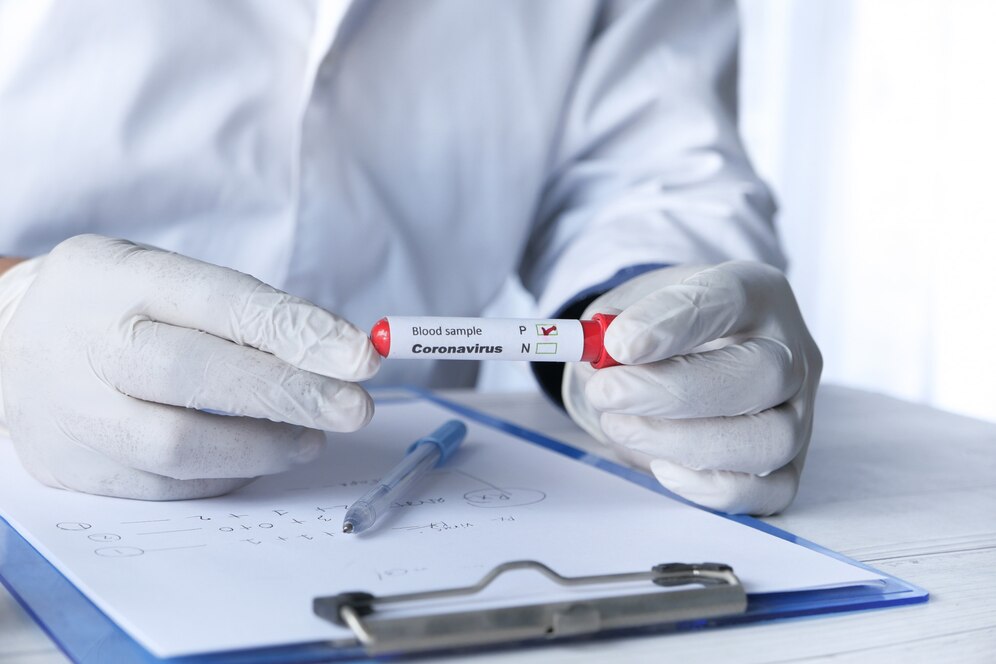A positive TB test results generate work-related questions about employee safety at the workplace and employee health status. Both employees and employers need to comprehend the essential meaning of receiving a positive tuberculosis test. The article explores employment opportunities with confirmed tuberculosis status while discussing latent TB infection treatment methods and relevant rules.
Understanding Tuberculosis and TB Testing
What Is Tuberculosis?
The contagious bacterial infection tuberculosis mainly infects the lungs, yet it has the potential to spread to various body regions. A person spreads the infection through tiny droplet particles released when they cough or sneeze.
Types of TB Tests
There are two main types of TB tests:
- Tuberculin Skin Test (TST): An intradermal injection of purified protein derivative (PPD) is administered, and the reaction is measured after 48–72 hours.
- Interferon-Gamma Release Assays (IGRAs): Blood tests that measure the immune system’s response to TB bacteria.
Interpreting a Positive TB Test
What Does a Positive TB Test Indicate?
The appearance of TB bacteria in body tissue through testing indicates their presence in your system. A positive TB test can exist while the person remains without active TB disease status. Medical examination needs to continue to confirm whether the infection exists in a latent or active state.
Latent TB vs. Active TB
- Latent TB Infection (LTBI): The bacteria are present but inactive. Individuals with LTBI are not contagious and do not exhibit symptoms.
- Active TB Disease: The bacteria are active and multiplying, leading to symptoms and the potential to spread the disease to others.
Can You Work with Latent TB Infection?
Working is possible for people who have LTBI because they do not transmit the infection to others. The condition does not transmit between individuals, nor does it endanger their coworkers. Medical authorities advise receiving treatment for LTBI to stop active TB disease from forming.
Can You Work with Active TB Disease?
The work restriction extends until someone with active Tuberculosis disease achieves non-infectious status. The medical clearance, combined with initial treatment completion, determines when patients become eligible to resume work.
Treatment Options for TB
Treatment for Latent TB Infection
Medical treatment for LTBI requires a patient to take antibiotics that eliminate dormant bacteria to stop the progression to active TB disease. The length and specific antibiotics in treatment programs are considered personal health conditions of each patient.
Treatment for Active TB Disease
The treatment of active TB disease needs multiple antibiotics administered during several months. Patients must complete their entire treatment exactly as prescribed because this action both treats the condition and maintains effective treatment susceptibility.
Workplace Policies on TB Testing
The policies for TB testing at workplaces depend on specific industrial sectors, along with geographical locations. Healthcare establishments demand TB testing because staff members experience greater exposure risks there. An employer sets predefined conditions that determine when an employee gains authorization to work after receiving a positive TB test result.
Legal Rights and Protections
According to U.S. law and international standards, the Americans with Disabilities Act (ADA) protects employees with tuberculosis. Human Resource managers must supply reasonable modifications, and employers are restricted from firing workers because they tested positive for tuberculosis infection.
Preventing the Spread of TB in the Workplace
Employers should implement infection control measures, such as:
- Providing personal protective equipment (PPE).
- Ensuring proper ventilation in work areas.
- Educating employees about TB prevention.
These measures help minimize the risk of TB transmission in the workplace.
Importance of Regular TB Screening
Healthcare facilities should utilize regular TB screening to detect infections early since these areas are considered high-risk for tuberculosis transmission. Treatment of latent tuberculosis infection can begin early when LTBI diagnosis occurs, which lowers the chance of active TB developing.
Addressing Stigma Associated with TB
The perception of stigma prevents many people from accessing testing services as well as receiving medical care. Business organizations, together with medical service provider,s should work to develop awareness campaigns that minimize discrimination and motivate people to pursue testing services.
International Considerations
Taiwanese regions, along with certain parts of Africa, frequently perform TB tests because of their high prevalence rates. International travelers, alongside expatriates, must know about tuberculosis testing protocols that exist throughout the world.
Role of Public Health Authorities
Public health authorities play a crucial role in TB control by:
- Providing guidelines for TB testing and treatment.
- Monitoring TB trends and outbreaks.
- Offering resources for education and prevention.
Collaboration between employers and public health authorities ensures effective TB control in the workplace.
Returning to Work After TB Treatment
Following a positive TB test you must undergo a medical supervision process when returning to work especially when active TB disease was present. Public health authorities together with their healthcare provider issue medical clearance for patients once they start proper treatment and exhibit substantial improvement while demonstrating non-transmittable status.
People with latent TB infection (LTBI) do not need to interrupt their work since they are not contagious. The patient must still comply with their prescribed preventive treatment even though the interruption of work is possible.
Succession plans for workplace returns should guarantee employees experience acceptance as well as security from discrimination. Inside HR and health and safety departments, medical information requires distribution only to employees who need fundamental knowledge of the matter.
Addressing TB-Related Stigma in the Workplace
TB receives unfavorable reactions from people who do not experience it often, thus resulting in both misconceptions and inaccurate fears. People frequently develop stigma about cases of TB, which might lead to social ostracism as well as employment-related discrimination.
Visionary organizations dedicate employee educational initiatives as an approach to address this issue. Teams develop both information and empathy when they understand both the lack of transmissibility of latent TB and the ability to treat and eliminate active TB after patients begin their medicine.
Open communication combined with privacy protections as well as educational factual sessions are effective at lowering fear levels. The HR department must provide employees complete knowledge of their rights while offering protection to those who report their tuberculosis status.
Importance of TB Awareness and Health Education
Raising TB awareness is a crucial public health measure—especially for employers in healthcare, education, or childcare sectors. By incorporating TB education into regular health and safety protocols, companies help employees recognize symptoms early and feel encouraged to get tested without hesitation.
Topics such as the difference between latent and active TB, how TB spreads, and what treatments exist should be addressed. Companies should consider offering TB testing services or referrals to reputable clinics and public health units for support.
Promoting a proactive culture around TB prevention not only protects workers but also fulfills legal and ethical obligations in the workplace.
The Role of Occupational Health in Managing TB Cases
When TB testing occurs frequently in settings such as hospitals along with clinics and nursing homes then occupational health teams step forward to act as essential figures. Staff members responsible for workplace health oversee testing schedules while analyzing test results and organize medical care for positive test cases.
Occupational health personnel direct employees who get positive TB test results to various follow-up tests which usually include chest X-rays combined with medical assessments for determining latent versus active infection status. The personnel evaluate results to provide recommendations regarding suitable treatments in combination with necessary work modifications and suitable return-to-work dates.
The staff collaborates directly with local public health authorities to execute TB control policies as well as implement preventive measures throughout the organization.
TB Testing Requirements by Industry
The process of TB testing requires multiple types of approach based on health scenarios. Organizations that face greater healthcare risks need to follow strict testing protocol. After hiring new staff members who work in healthcare and long-term care facilities as well as correctional settings shelters or daycare centers they must submit to TB testing and repeat testing at regular intervals.
The requirement for school staff, together with laboratory personnel and emergency responders, is set in some particular areas. The standards that shape these requirements are established by the CDC together with WHO and health departments operating at local levels.
Private companies that conduct risk assessments have the flexibility to set TB testing requirements according to their organizational needs. Workers must understand both safety standards and compliance requirements that specifically affect their workplace and geographical location.
Where to Get a TB Test Near You
If you’re wondering, “Where can I get a TB test near me?”, you have several options:
- Local health departments often offer low-cost or free testing.
- Primary care physicians can conduct TB blood tests or refer you to testing services.
- Pharmacies like CVS or Walgreens may provide TB skin testing.
- Urgent care centers or walk-in clinics also frequently perform TB screenings.
Legal Protections for Employees with TB
The laws prohibiting health status discrimination protect workers diagnosed with TB in numerous nations. Under the Americans with Disabilities Act (ADA) of the United States gain protection against discrimination because of their health status. Any worker obtaining a positive TB test result either showing active or latent infection, cannot face discipline or termination from their position.
A continuous treatment period sometimes qualifies for protection under the Family and Medical Leave Act (FMLA) benefits. Employers need to create practical workplace adaptations starting from medical treatment until complete recovery which may include enabling alternative work arrangements together with modified job functions.
This understanding must properly exist between employers and employees about their rights. Businesses should turn to employment lawyers or HR specialists for help whenever unclear issues arise.
Conclusion
The extent of workability with a positive TB test depends on whether the patient has latent or active tuberculosis infection. People who have latent TB infection can safely stay at work, while active TB patients must undergo treatment with necessary isolations until they no longer pose infection risks. Health regulations dictate how employers should behave while they protect their employees’ rights and create workplace safety for all staff members.
A positive TB test requires calm action when you or anyone at your workplace receives such test results. Work on making informed decisions through medical advisor contact and learning your job status and teaming with workplace health services and management. Proper treatment of TB enables successful management of the disease which leads to minimal professional disruption after proper management. To schedule your appointment with the highest standard of care and visit Sahara West Urgent Care, visit our website.
(FAQs)
Can I be fired for having a positive TB test?
No. In most regions, labor laws protect employees from discrimination based on medical conditions. A positive TB test alone is not grounds for termination.
Is latent TB contagious to others?
No. People with latent TB infection are not infectious and cannot spread the disease.
Do I need treatment if I have latent TB?
Yes. Although you’re not sick now, treatment helps prevent the infection from becoming active and contagious in the future.
How long after starting TB treatment can I return to work?
In most cases of active TB, once you’re no longer contagious—usually after a few weeks of proper treatment—you may return to work with medical clearance.
What’s the difference between a TB skin test and a blood test?
A skin test involves injecting a small amount of fluid under the skin, while a blood test (IGRA) measures your immune response in a lab. Blood tests are preferred for people who have received the BCG vaccine.





